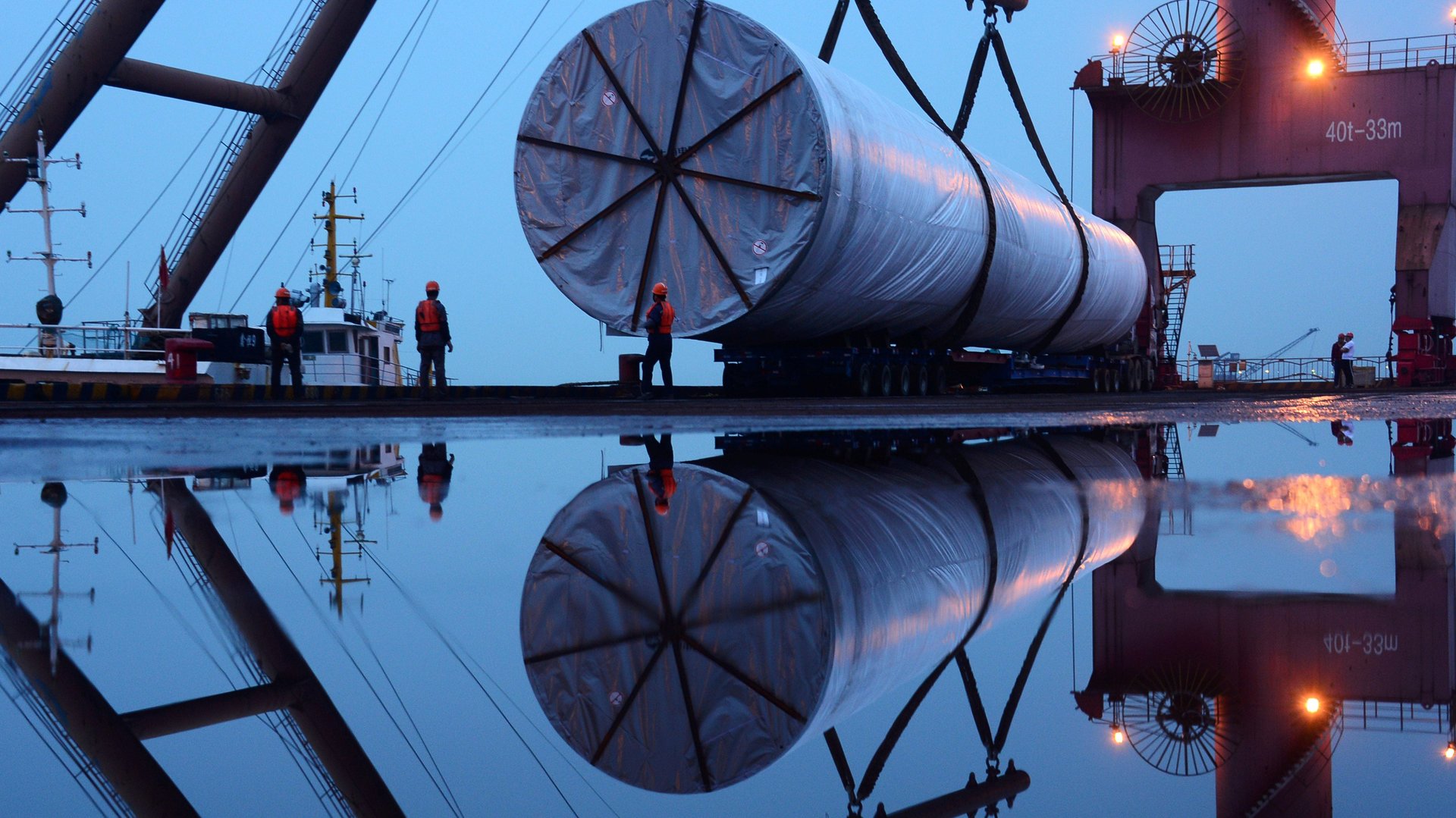Four huge new energy deals show the future of decarbonization
On Feb. 8, several of the world’s biggest energy companies committed tens of billions of dollars to build out their vision for the next phase of the global energy transition. Although unconnected, the moves show that despite a general drop in spending because of the pandemic, some energy companies are willing to invest heavily to get big low-carbon projects moving ahead of their competitors.


On Feb. 8, several of the world’s biggest energy companies committed tens of billions of dollars to build out their vision for the next phase of the global energy transition. Although unconnected, the moves show that despite a general drop in spending because of the pandemic, some energy companies are willing to invest heavily to get big low-carbon projects moving ahead of their competitors.
The investments make four big trends clear.
European oil majors see their future in offshore wind
In the UK, the oil companies BP and Total emerged as the two top victors in a bidding war for an area set aside for offshore wind farm development. The two companies will each pay more than $1 billion to the UK to secure their claims, and plan to independently invest tens of billions of dollars building offshore wind turbines in the coming years.
Competition is heating up between European oil companies which see offshore wind as their best way to seize a lucrative slice of the growing market for zero-carbon electricity and leverage offshore operational skills from their drilling days. The UK bids follow at least two other big offshore wind deals this year: In January, Total announced plans to build one of the world’s largest wind farms off the coast of Denmark, while BP won one of the biggest renewable energy deals in US history for an offshore wind farm in New York. Altogether, offshore wind projects in Europe drew a record $31.7 billion in investments in 2020; the market in the US is just beginning to open up.
Tech giants are key buyers of zero-carbon electricity
Tech companies are turning out to be critical early adopters of clean energy. In recent years, they have often been the first to step in as main customers for wind and solar projects in Asia, the US, and Europe. Dutch oil company Shell agreed to sell Amazon about half of the power generated by the giant new wind farm it’s building in the North Sea. Amazon claims to be the world’s top corporate purchaser of zero-carbon electricity, and the Shell deal will be its largest single project to date, equal to the output of about 6.5 coal-fired power plants. The electricity will mostly power Amazon’s carbon-intensive data centers, putting it on track to run its operations exclusively on renewable power by 2025, five years earlier than originally planned, the company said — although for now, the company’s overall carbon footprint is still rising.
China will defend its title as king of renewable energy
Back on shore, Chinese solar firm Xinte Energy, a top producer of raw materials for solar panels, announced it is investing $2.5 billion in what will be the world’s largest polysilicon factory. When the new facility becomes operational in a few years, it will boost the global supply of polysilicon by a third at a time when solar is the world’s fastest-growing energy source. China is already responsible for more than 70% of global solar panel production, and is keen to defend its dominance after president Xi Jinping announced in December a goal for the country to source one-quarter of its electricity from zero-carbon sources by 2030. Investments like this will make it even harder for European and US solar companies to compete.
Time is running out for countries exporting natural gas
Despite all these announcements, rivers of money are also still flowing into fossil fuels. Qatar’s state-owned oil company committed to spending $29 billion on a system of facilities to produce and export liquified natural gas. The project will be the largest liquified natural gas (LNG) operation ever built, according to the energy research firm Wood Mackenzie. It will also most likely be the largest single fossil fuel production project green-lit this year, for two reasons. First, most oil companies have slashed their budgets for exploration and production because of the pandemic, so big spending announcements will be rare. Second, Qatar is uniquely positioned to capitalize on what is likely the world’s last fossil fuel gold rush: LNG exports, which a growing number of countries in Asia and Africa are turning to as a source of power that is less polluting than coal.
Global LNG demand is growing quickly, but there are more export projects under development globally than even a rosy demand outlook requires. A race is on to snap up market share before it all gets eaten up by rivals. Qatar already produces much of the world’s lowest-cost natural gas. The new investment will force public and private entities with planned LNG projects in Tanzania, Mexico, the US, and elsewhere to speed up or drop out. The new facility, likely to remain operational for decades, cements the fact that natural gas will be the hardest fossil fuel addiction for the global economy to shake.